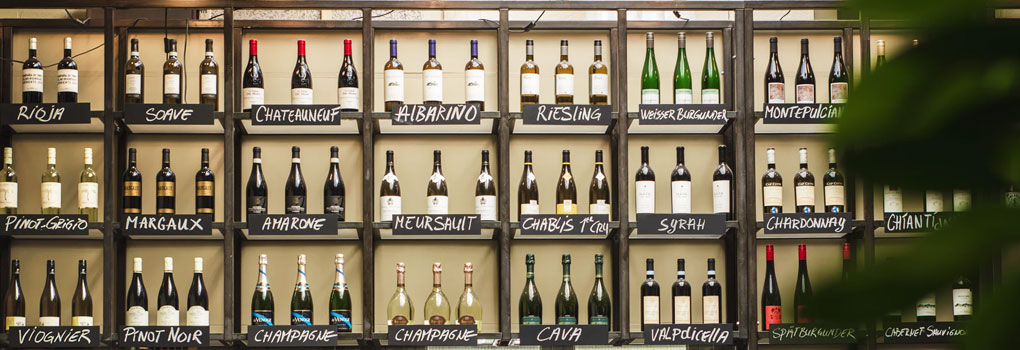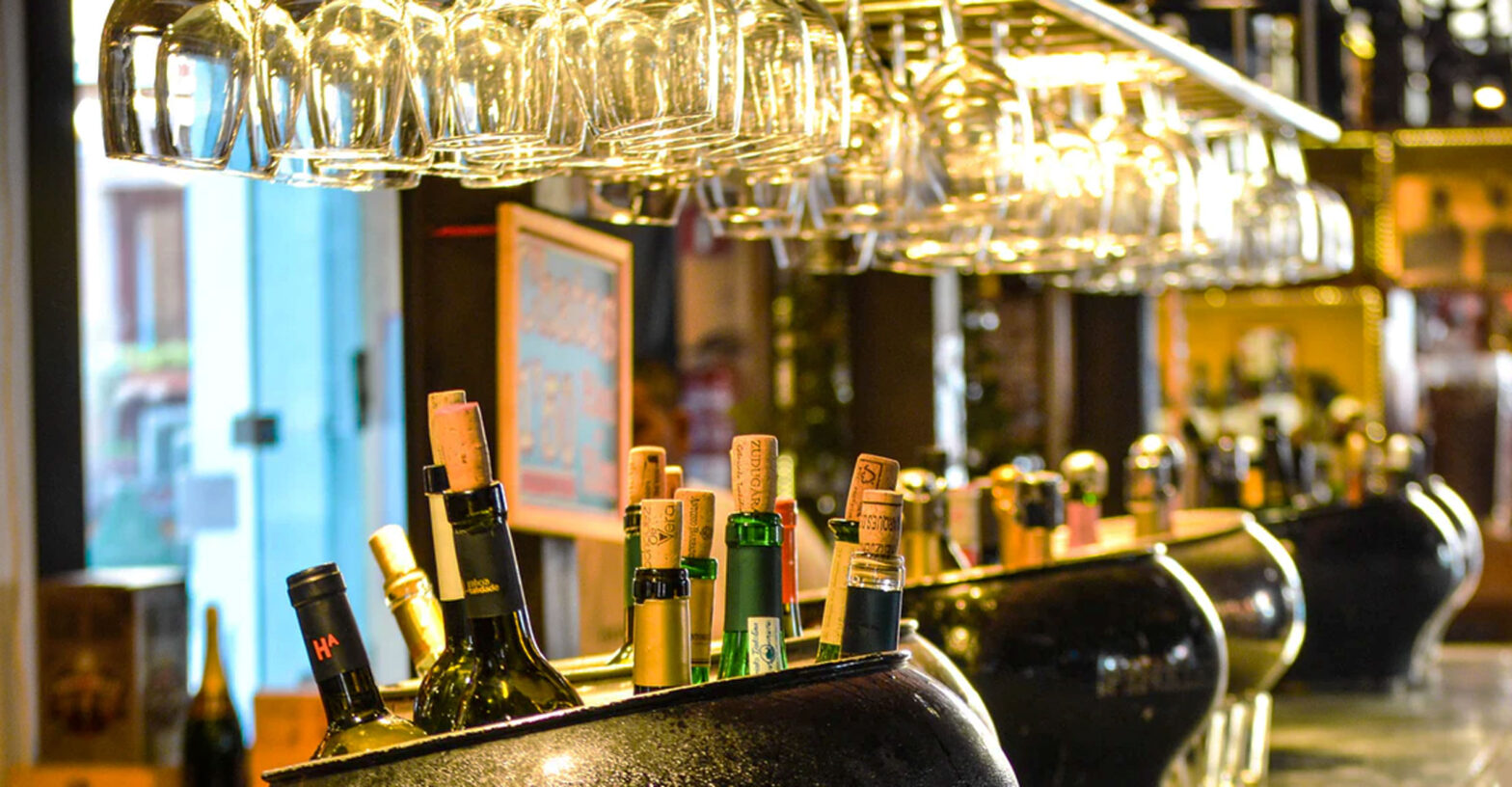Wine by the glass is not a new experience for New Zealand dinners - who have had this option offered for many years. But around the rest of the world ‘wine by the glass’ selections have only grown in size and popularity across the more ‘casual dining’ outlets over the past 15 - 20 years or so.
A few things to be aware of: There is no standard glass pour volume. A 175ml pour can be a typical glass of wine in some countries, but for staff this can lead to unequal pours and a second bottle required to top up the last glass pour. However, many establishments in New Zealand use a 150ml pour as it allows them to serve exactly 5 glasses of wine per bottle. Though this said, with a pour-line or logo on the glass, more control in pouring 3 or 4 pours from a bottle is becoming more common in some establishments. Plus if a guest is driving they may ask for a small 100ml glass with their entrée to manage alcohol consumption.
If a wine is available by the glass, you can feel quite comfortable asking the staff politely for a taste before committing to ordering a full glass or a whole bottle.
A 750ml bottle contains enough wine for 4 - 5 full glasses of wine, a comfortable amount for a two-person dining occasion. The mark-up per glass varies considerably - across the globe there is an extreme range in calculations as to what people charge for a glass pour. It is also very common for two restaurants to charge considerable different prices even when located across the street from each other - depending if it is 'casual dining' or a more 'formal fine dining' restaurant.
Remember an open bottle of wine can spoil relatively quickly - most restaurants do not use wine preservation systems. The wines poured at the beginning of service are often open from the night or day before. On larger wine lists some wines can be open for multiple days. The wines that are left open the longest tend to be ordered the least: obscure brands, unknown styles or varietals, higher-priced wines, sweet and fortified wines.
Occurring less each year - but still a detail to note, corporate brand placements - large wine brands pay money to partner with chain restaurants and hotel groups. These partnerships can on occasion limit the wine list and the wines by the glass at key price-points. This partnership can encourage staff to push a wine based on financial incentives rather than a good pairing with the menu or your meal.
Well managed ‘wine-by-the-glass’ programs can increase sales turnover and with limited spoilage are more profitable than bottle sales. However, restaurants and bars typically only offer a range of lower priced wines by the glass. This is because of the problems and risks associated with opening higher priced-premium wine labels, these being: Staff over-pouring glasses and thereby reducing profit margins - or wine that is not consumed oxidizing and being wasted. Though wine preservation systems like ‘Le Verre de Vin’ if used correctly can protect wine from oxidation enabling bottles to be opened and served over a period of *2 weeks.
The key to a successful wine by the glass selection is working with the menu - and better still with the chef, so you know how each dish will be cooked and served. The correct storage and temperature of open white and red wine bottles is always an issue with a large ‘wine by the glass’ program. For a restaurant owner - when selecting wines by the glass to match your menu - make sure that every dish on the menu has a wine match - (yes - one wine can complement more than one dish). There are too many wines by the glass programs out there that only do it by price. Don’t get me wrong - glass price is a factor to consider. It is important to include some affordable and well known wine options, but you must select wines that are drinking now (i.e. in a few minutes from ordering), are well balanced and match your menu. Make sure you have a wine list and not a price list. And don't forget the most important factor, well informed staff - if they truly know what is going on with the combination of flavours - then you don’t need to be afraid to select wines from around the world.
Wines by the glass should not be an afterthought - as for many reasons today, bottle purchases are less - so having a good and well chosen wine by the glass selection - you can suggest an apéritif, through to pairing a wine with an entrée, main and dessert, plus for all other occasions regulars & guests visit your establishment.
• Don’t go too far; an overly large wine-by-the glass selection is not always better - because it is a lot of work and more difficult to maintain, manage and keep track of any tiring wines. Better to keep the selection fresh and interesting, by updating with a new release or with menu adjustments, plus sample a few potential new wines by the glass before the next major change to the full-list. But for me the key to a successful ‘wine by the glass’ selection is well educated staff - yes it can be that simple.

Oxidation of Wine:
The oxidation of wine is perhaps the most common of wine faults. As the presence (contact with) of oxygen and a catalyst are the only requirements for the process to occur. It is also known or described as 'maderized' wine - from the process of making Madeira wine, which is intentionally oxidized *(exposing the wine to both heat and varied levels of oxidation) during the winemaking process.
Oxidation can occur throughout the winemaking process (hence exposure to oxygen in the winery in tanks and oak barrels is carefully controlled, although not completely avoided), and even after the wine has been bottled.
Anthocyanins and other phenols present in wine are those most easily oxidized, which leads to a loss of colour, aroma and flavour - sometimes referred to as 'flattening' of the primary characters of a wine.
In most cases compounds such as sulphur dioxide is added to wine by winemakers, which protects the wine from oxidation and also binds with some of the oxidation products to reduce their organoleptic (sensory) effect.
When a wine becomes oxidized it will turn towards brown - just as a cut apple left on a bench top. White wines will start to show an amber tint and red wines will start to develop a brick-brown edge when viewed in a glass that is tilted. In extreme cases where there is excessive air exposure over longer periods of time, the wine can develop a nutty to caramel aroma, and may also develop slight off-flavours that resemble raisins or cough syrup.
It is also important to note that white wines are affected more easily by oxidation than red wines. This is mainly because red wines have more colour pigmentation than white wines. This extra colour pigmentation in the wine, acts as an anti-oxidant, preserving the wine's colour, aroma and flavour.
The biggest factor in oxidation is the amount of wine surface contact with air following opening and pouring. Therefore, quality wine preservation closures that are most effective at reducing air contact with the wine surface will best reduce oxidation.
Once a bottle of wine has been opened for some time, or if oxygen has seeped past a faulty cork or a damaged screw-cap, the wine will oxidise, so it is good practice to simply check all wines before serving.

